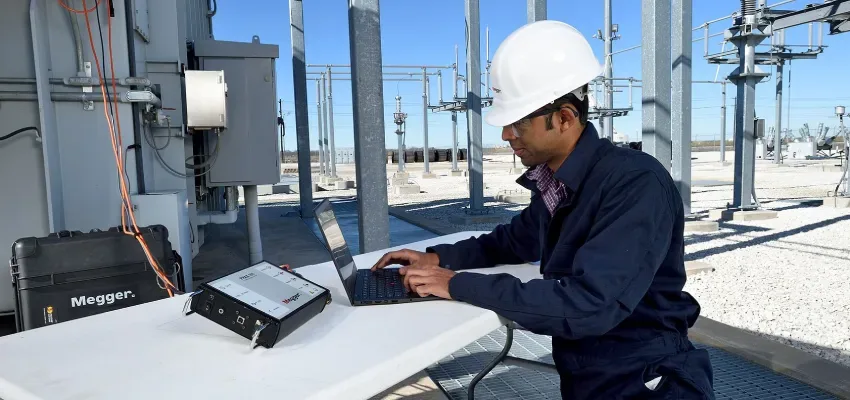
Transformer failure diagnosed with SFRA testing
Called to investigate in-service failure of a 22 MVA furnace transformer, Hitachi Energy Service Group in Sweden carried out a battery of tests to determine the type and location of the fault.
by Megger

Image source: Megger
Called to investigate in-service failure of a 22 MVA furnace transformer, Hitachi Energy Service Group in Sweden carried out a battery of tests to determine the type and location of the fault.
After many years of service, the transformer, a 10.5 kV/265 V Diii unit with 13 taps for adjusting the output voltage, suddenly failed. Fortunately, a spare was available on site, so the large consequential losses often associated with transformer failure were avoided and time was available for detailed testing of the defective unit.
Tests performed included turns ratio, winding resistance, insulation resistance, dissolved gas analysis (DGA) and sweep frequency response analysis (SFRA). Turns ratio tests were performed on all taps and acceptable values were obtained for Phases A and B. Phase C could not be tested as its impedance was too low.
The results of the winding resistance tests were compared, after temperature compensation, with the values from the transformer’s factory acceptance test. There were significant deviations on all phases which increased as the tap changer was moved from Position 1 to Position 13, but by far the largest deviations were on Phase C. It proved impossible to carry out insulation resistance tests on the HV windings. The DGA tests results indicated the possibility of “high energy discharge including arcing”.
It was clear that the transformer had an internal fault and, to localise this, SFRA testing was carried out using a Megger FRAX 101 test set. The results clearly showed that there was a short circuit in Phase C, which was also affecting the SFRA response in the other phases. Internal examination of the transformer confirmed this diagnosis; the Phase C regulating winding was badly damaged, and the transformer required full restoration before being returned to service.
While the results from the range of tests performed on this transformer were interesting, the fault could have been positively diagnosed using SFRA testing alone. Further, routine SFRA testing of service-aged transformers provides invaluable insights that may indicate, for example, the need to modify operating conditions to minimise the risk of failure.
A detailed account of the tests performed on the defective furnace transformer, together with diagrams and tables of results, is available here.
Source: Megger




